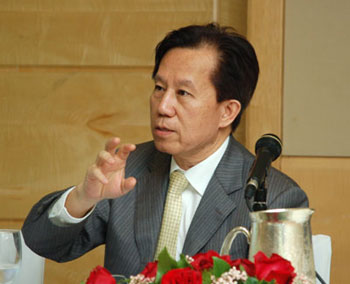
CHINA’S TEXTILE players faced the worst during the fourth quarter of last year but the sector is now recovering, said Cao Xiangbin, the executive chairman and CEO of China Gaoxian Fibre Fabric at its 1H09 investor meeting yesterday.
The chemical fiber maker, which floated 1.44 billion shares at the IPO issue price of 26 cents on 18 Sept, is the most profitable textile player listed on the SGX.
Its 1H09 net earnings were Rmb 185 million, up 1.3% year-on-year.
It raised net proceeds of S$78.2 million and is this year’s largest IPO, with a market cap of about S$350 million.
Gaoxian manufactures high-end yarn and fabric for distributors and traders to resell to manufacturers of popular apparel brands such as Sept Wolves and Nike.
Customers pay a premium for fiber that possess customized and desirable traits such as high tensile strength, brilliant luster, abrasion resistance, and heat resistance.
That’s why net margins are fat - in excess of 20% (2Q09: 21.6%).
”We are a leading player in our niche market of high-end differentiated polyester yarn,” said CFO Raymond Wong.
The premium lies in the company’s ability to vary the physical, mechanical and chemical properties of its yarn according to customers' demand.
To learn more, read the highlights of the Q&A session which a roomful of investment professionals had with Gaoxian’s management at the Fullerton Hotel yesterday:

Raymond: For the high-end yarn segment, China has to rely on imports to satisfy demand. According to reports, the deficit as of mid 2009 was about 50%. In past years, it was even higher.
We believe this gap will narrow as local manufacturers increase their production capacity. We too will increase our capacity after our listing.
Nevertheless, the total market size is increasing because of the rising affluence of the Chinese people, who are now more concerned about quality rather than pricing.
Another positive factor is, the textile and garment industry is heavily supported by the Chinese government because it employs a lot of workers. We believe the import tariffs will still be in place in the near future, which will help domestic players.
Another factor: there are many small players in the industry and they operate Just In Time, and because we are a local player we can support our customers more timely than the importers.
Q How much do the high-end of the products account for the total market?
Mr Cao: We introduced several new products in 2008, which contributed significantly to the 1H 09 results. The fastest growing products are the triangular fibre yarn and warp knit fabric.
In the overall polyester sector, 15-18% of the products are considered high end, which are finer and have a more lasting softness and sheen. Our company is positioned in this sector. (translated answer)
Q Can the company comment on its gross margin going forward?
Raymond: We forsee this to be very stable for the rest of the year. A reason for this is, we will focus our production more on the high-margin products (triangular fibre yarn, blended yarn and warp knit fabric).
Q Your capex for 1H09 was only RMB 71,000 but in 1H08 it was RMB63 m. Why such a big difference?
Raymond: Last year, we were building an office building within our factory and we introduced new production lines. In the first half of this year, our capex was not much but after listing (in Sept 09), we will use the IPO proceeds to buy more production lines and start a new factory. Details of these have been set out in our announcements.

Currently, we have a total production capacity of 180,000 tonnes, which will increase slightly by year-end. Next year, the capacity will increase to 241,300 tonnes.
For the fabric factory, the capacity will be 81,900 tonnes by end of next year.
Q Who are your competitors and customers?
Mr Cao: One of the major growth drivers of the company is its integration downstream into Warp Knit Fabric. There is no direct competitor – it depends on your technology and techniques and you can come up with different products. Our customers are mainly distributors who sell to garment manufacturers. (translated answer)
Q What’s your dividend policy?
Raymond: Where possible, we would like a steady payout ratio. In 1H this year, it is 25% of the net profit, but this ratio may go up and down depending on whether we have major capex. We won’t forget our shareholders.
In his concluding remarks, Raymond said the company was not obliged to release its Q2 results as it was newly listed but had done so “as most of our shareholders and potential shareholders would like to know, and we would like to be transparent.” The company will announce its Q3 results in the week starting Nov 9.







